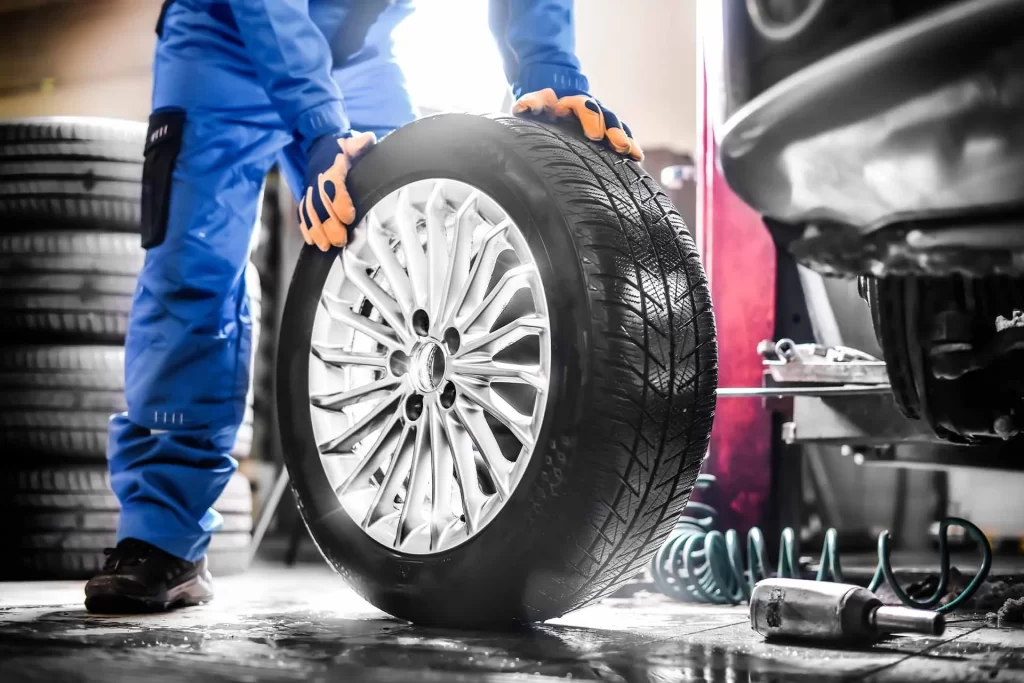The tires on your vehicle are your direct connection to the road. And they will take a beating through years of driving, leaving them thin and damaged.
Tire experts recommend replacing your tires when the tread wears down to 2/32 of an inch or less. This can be easily tested using the penny test: place a penny head-first into the tire’s tread ribs.
Your Tires Are Cracking
It’s no secret that tires wear down over time, and cracking is one of the most serious signs that your tires need replacing. Cracks expose the internal materials to the elements, causing them to degrade faster than they otherwise would.
Tire cracks may start as fine hairline cracks in the sidewall or between tread blocks. If they get larger, they can signal that your tires are approaching their end of life and could blow out while you’re driving.
If you’re unsure whether your tires are ready for tire replacement Alma GA, use the NHTSA’s “penny test” to check for tread depth. Insert a penny into the tread with Lincoln’s head upside down and facing you. If you can see the top of his head, your tires need to be replaced. This will help ensure your safety while driving and prevent expensive car damage.
Your Tires Are Losing Pressure
Tires are your car’s only connection to the road, so keeping them in good condition is important. Having tires that are worn out will significantly decrease your vehicle’s performance as it will have a hard time responding to steering commands and will increase the distance it takes for you to brake and turn.
Fortunately, there are many ways you can tell if your tires need to be replaced. One of the most popular ways is using the “penny test.” To do this, slip a penny (or a quarter if you prefer) upside down into the tread grooves of your tires. If you can see Lincoln’s head, the tread is too thin, and it is time to get new tires.
Tires are constantly exposed to the elements, so they will eventually start to degrade over time. A common sign of this is fine cracks on the sidewall and between the tread blocks. These cracks will expose the internal materials to the elements and can lead to a sudden failure.
Your Tires Are Blistering
Tires showing blistering or bulges along the sidewalls are a warning sign that it’s time to replace them. The blisters or bulges indicate that the sidewalls are weakened, which can cause them to fail at high speeds, leaving you with flat tires.
Generally, tires are considered to be bald when the tread wear bars (raised sections in the bottom of the grooves) reach 2/32 inches of depth, compared to the new-tire benchmark of 10/32 inches. But you can use the simple penny test to double-check: Slip an upside-down penny between the tread grooves. If you can see Lincoln’s head, the tires are bald, and it’s time to start shopping for new ones.
Your Tires Are Bulging
A bulge in your tire’s sidewall indicates that the structural integrity of the inner portion of the tire has been compromised. This serious problem can lead to a blowout at highway speeds and put you in danger.
A tire bulge is a ticking time bomb ready to explode and cause a deadly accident on the road. It is very important to replace the tire as soon as you notice a bulge in it.
The most common causes of tire bulging are a substantial impact with potholes, curbs, or other objects on the road, over-inflation, and manufacturing defects. It is important always to keep your tires properly inflated and inspected regularly.




